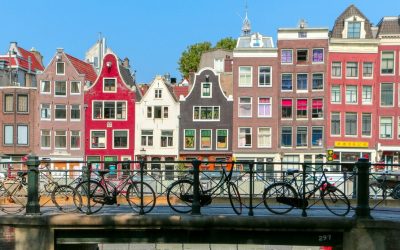 di Nadia Fondelli – Sarà un giorno importante il prossimo 17 dicembre per Firenze perchè, dopo ben 220 di “pellegrinaggio” fra varie sedi più o meno opportune, tornerà nella sala 35 degli Uffizi – detta di Michelangelo per la presenza del celebre Tondo Doni – l’Arianna addormentata, copia romana del III secolo a.C. di una scultura ellenistica, dalle dimensioni notevoli.
di Nadia Fondelli – Sarà un giorno importante il prossimo 17 dicembre per Firenze perchè, dopo ben 220 di “pellegrinaggio” fra varie sedi più o meno opportune, tornerà nella sala 35 degli Uffizi – detta di Michelangelo per la presenza del celebre Tondo Doni – l’Arianna addormentata, copia romana del III secolo a.C. di una scultura ellenistica, dalle dimensioni notevoli.
Dopo il restauro e uno spettacolare trasporto, la scultura diverrà parte integrante del nuovo allestimento della Sala 35 degli Uffizi, dove la si potrà ammirare, oltre che insieme al Tondo Doni, alle opere di Bugiardini, Albertinelli, Fra’ Bartolomeo, Granacci, Andrea Del Sarto, Franciabigio e Berruguete.
“Con questo allestimento, coerente con la nuova sala dedicata alla scultura antica in apertura del Cinquecento – ha detto la soprintendente Cristina Acidini – si conferma la rievocazione del paragone fra l’Antico e i moderni che diede slancio ai sommi artisti del Cinquecento, Michelangelo compreso. Si sta così scrivendo agli Uffizi un nuovo capitolo di museologia”.
Dal canto suo il direttore della Galleria degli Uffizi, Antonio Natali, responsabile del progetto, ha aggiunto che “Proprio al centro della nuova sala dedicata a Michelangelo e ai maestri fiorentini di primissimo Cinquecento, sarà posta a fulcro la monumentale statua di Ariadne, nota ai più col nome di Cleopatra. E come Cleopatra la menziona Vasari, quando l’annovera nel gruppo dei marmi ellenistici che, a suo giudizio, furono d’un fascino così intenso da condizionare il corso dell’arte, dando avvio alla cosiddetta ‘maniera moderna”.
Acquistata dal cardinale Ippolito d’Este per la nuova sistemazione dei giardini del Quirinale nel 1572, la statua costituiva uno degli ornamenti più vistosi del giardino Del Bufalo presso fontana di Trevi.
Dopo la morte del cardinale la scultura fu comperata dal cardinale Ferdinando de’ Medici (futuro terzo Granduca di Toscana) e sistemata a Villa Medici di Roma; da qui fu trasferita poi a Firenze nel 1787.
Fu proprio nella splendida villa romana sul Pincio, che la gigantesca figura marmorea di Arianna addormentata accolse centinaia di illustri protagonisti del Grand Tour italiano, da Jonathan Richardson a Johann Winckelmann. Anche Velasquez dopo averla ammirata pare abbia voluto rendergli omaggio raffigurandola in una tavola, oggi al Prado, nella quale la statua troneggia nella sua loggia affacciata sui vialetti sapientemente modellati come vero e proprio Genius loci del giardino del Pincio.
Giunta a Firenze la statua subì un complicato ed eccessivo lavoro di restauro e andò a finire nei depositi del Bargello, fu riconosciuta solo nel 1883 dall’archeologo Adriano Milani per essere infine sistemata, agli Uffizi. Considerata troppo “rimaneggiata” uscì molto presto dal prestigioso museo e iniziò il suo lungo pellegrinaggio: villa di Poggio Imperiale, Palazzo Pitti e infine Museo Archeologico dove, nel 1883, trovò una sistemazione che si pensava definitiva nel Salone del Nicchio di Palazzo della Crocetta, ma così non fu.
Il ripensamento del percorso espositivo di quel museo in seguito all’alluvione del 1966, comportò la rimozione della statua che, relegata nei depositi di Villa Corsini a Castello, conobbe un breve ritorno all’attenzione del pubblico solo a partire dai primi anni duemila, in conseguenza del parziale riallestimento in forma museale degli ambienti monumentali della villa.
Soltanto grazie alla preziosa collaborazione del direttore del Museo Archeologico Nazionale di Firenze, Giuseppina Carlotta Cianferoni, e alla generosità degli Amici degli Uffizi, l’Arianna, fresca del restauro torna nel luogo che le spetta di diritto, ultima tappa, ci si augura, di un’odissea durata oltre due secoli che ha visto l’infelice figlia di Minosse peregrinare per i palazzi e le ville della città.
 by Nadia Fondelli – It will be an important day the next 17 December to Florence and not only because Online Pokies, after more than 220 of “pilgrimage” in various locations more or less appropriate, return to Room 35 of the Uffizi – that of Michelangelo for the presence of the famous Doni Tondo – l ‘ Ariadne asleep, a Roman copy of the third century BC of a Hellenistic sculpture, the large size.
by Nadia Fondelli – It will be an important day the next 17 December to Florence and not only because Online Pokies, after more than 220 of “pilgrimage” in various locations more or less appropriate, return to Room 35 of the Uffizi – that of Michelangelo for the presence of the famous Doni Tondo – l ‘ Ariadne asleep, a Roman copy of the third century BC of a Hellenistic sculpture, the large size.
After the restoration, and a spectacular move the sculpture will become part of the new layout of the room 35 of the Uffizi, where you can admire, as well as to Doni Tondo or the works of Bugiardini, Albertinelli, Fra ‘Bartolomeo, Granacci, Andrea del Sarto, and Franciabigio Berruguete.
“With this production, consistent with the new room dedicated to ancient sculpture at the beginning of the sixteenth century – said the superintendent Cristina Acidini – confirms the re-enactment of the comparison between the ancient and the modern that gave impetus to the chief sixteenth-century artists, including Michelangelo. It’s so writing a new chapter of the Uffizi museum studies.
“For his part, the director of the Galleria degli Uffizi, Antonio Natali, project manager, added that” Right in the middle of the new room dedicated to Michelangelo and Florentine masters of the highest sixteenth , focus will be placed on the monumental statue of Ariadne, best known under the name of Cleopatra. Cleopatra And as the Vasari mentions, when the counts in the group of Hellenistic marble which, in his opinion, were of a charm so intense as to affect the course of art, giving rise to the so-called ‘modern manner. “
Purchased by Cardinal Ippolito d’Este for the resettlement of the Quirinale Gardens in 1572, the statue was one of the most visible manifestations of garden ornaments Del Bufalo at the Trevi Fountain.
After the death of Cardinal sculpture was bought by Cardinal Ferdinando de ‘Medici (the future third Grand Duke of Tuscany) and placed at the Villa Medici in Rome, from where it was moved to Florence in 1787.
It was in the beautiful Roman villa on the Pincio, the giant marble figure of Ariadne asleep welcomed hundreds of prominent players in the Italian Grand Tour, by Jonathan Richardson Johann Winckelmann. Even after having admired Velasquez seems to have wanted to pay homage to him portrayed in a table, now in the Prado, where the statue stands in its loggia overlooking the paths cleverly modeled as a real genius loci of the garden of the Pincio.
Arrived in Florence the statue underwent a complicated restoration work and ended up in the stores of the Bargello, was only recognized in 1883 by the archaeologist Adriano Milani to be finally settled, the Uffizi.
Considered too “altered” came from the Uffizi and began his long pilgrimage villa of Poggio Imperiale, Palazzo Pitti and finally Archaeological Museum where, in 1883, he found an arrangement that final thought in the Hall of the Palace of Nicchio Crocetta, but it is not was.
The rethinking of the exhibition of the museum after the flood of 1966, involved the removal of the statue, confined to the deposits of Villa Corsini Castle, enjoyed a brief return to public attention only since the early years of this decade, in consequence of the partial redevelopment in the form of the museum in monumental villa.
Only thanks to the collaboration of the director of the National Archaeological Museum of Florence, Josephine-Charlotte Cianferoni, and the generosity of the Friends of the Uffizi, Arianna, fresh restoration back in its rightful place, the last stage, it is hoped, to odyssey lasted more than two centuries that saw the unhappy daughter of Minos pilgrimage to the palaces and villas of the city.




0 commenti